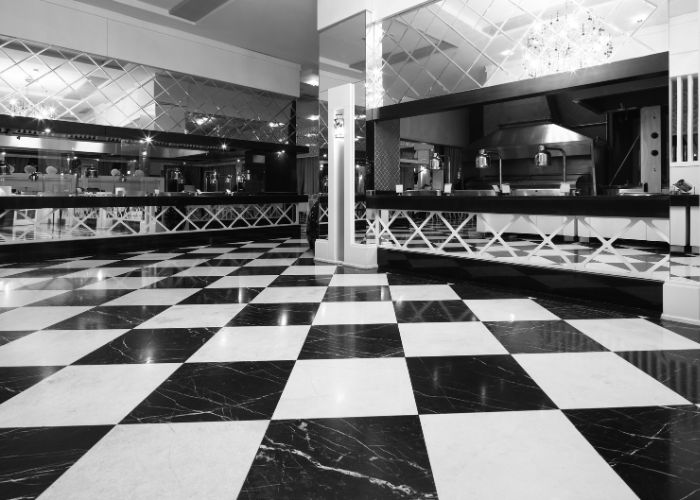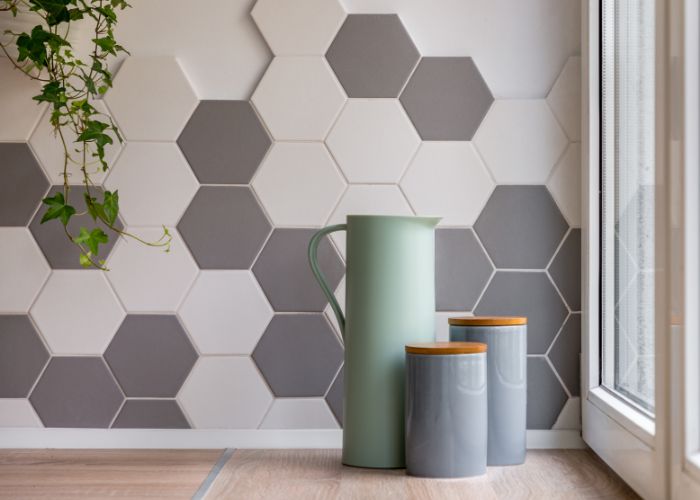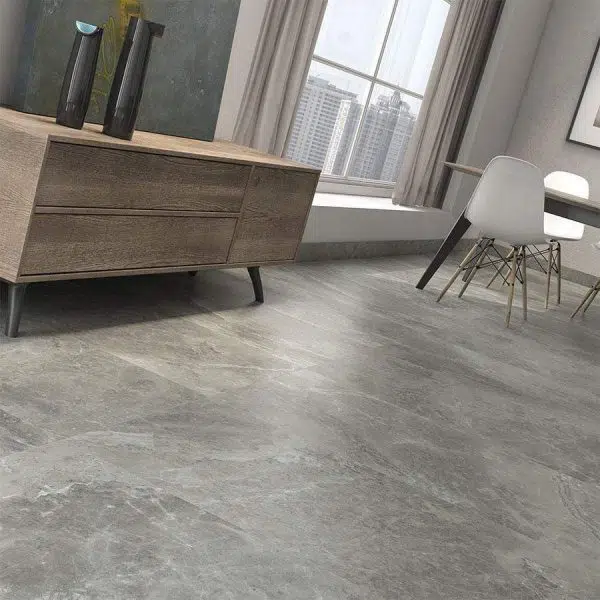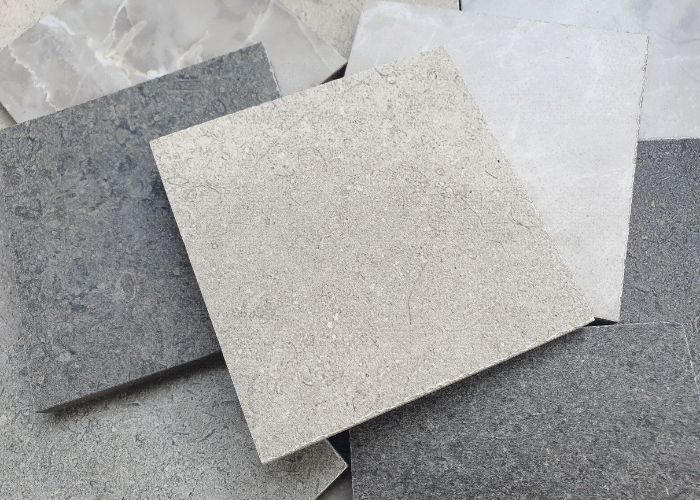Although many tiles marketed as wall or floor tiles can look very similar aesthetically, there are actually some pretty important differences between the two.
To make sure that your home looks as beautiful as possible – for as long as possible –it’s important to get the right tiles for your project. And that includes understanding the difference between floor tiles and wall tiles.
We’ve been in the tile industry since 1986 (even we can’t believe it!), so it’s fair to say we know a a lot about it.
Here’s a quick guide to help you understand the differences between floor vs wall tiles – as well as how to choose and use them effectively.

The Main Differences Between Wall and Floor Tiles
The differences between floor vs wall tiles reach far beyond differences in size and patterns.
There are some specific safety specifications that tiles must meet to be classified as either a wall tile or a floor tile.
1) Safety Ratings
The major difference between these two types of tiles is the safety ratings that they have to meet. These ratings are often referred to as Coefficient of Friction (COF) and Porcelain Enamel Institute (PEI).
The COF is the rating that determines whether a tile is suitable to be used on a wall or floor. In order to be deemed safe for use on bathroom floors, a tile must have a minimum level of friction to avoid slips and trips. The higher the COF number, the more friction the tile has.
PEI ratings refer to the durability and hardness of a tile. This rating is broken down into 5 categories numbered from 1 to 5. The higher the number, the more durable the tile is.
If a tile has a high COF and PEI rating, it’s suitable to be used as a floor tile. If it has a low rating for either of these measures, it’s best suited as a wall tile.
| Floor Tiles | Wall Tiles | |
| COF (Friction) Rating | 0.50 or greater | Any rating |
| PEI (Hardness) Rating | 3 – 5 | Any Rating |
| Recommended Use | Floors, walls, & countertops | Walls only |
Luckily though, the tile shop or supplier you’re getting your tiles from will have taken these factors into account, making sure to only offer tiles that are suitable for their intended purpose. So you shouldn’t need to fret about whether they’re compliant or not!

2) Appearance of the Tiles
Another common difference between wall and floor tiles is obviously their appearance. Floor and wall tiles will come in tons of different colours, textures, styles and sizes, fantastic for creating a unique and eye-catching design in your home.
Our Favourite Floor Tile Designs
Floor tiles are often used in high-traffic areas prone to the dirt and debris of everyday life. Think of the kitchen or bathroom. Because of this, it’s common to choose a tile for your floor with a natural or applied pattern.
The more intricate the pattern is, the better it hides the dirt.
For this reason, it’s common to find tiles on the floor that have a marble effect, wood effect, or natural stone effect as well as patterned tiles. It’s also a common occurrence for large format tiles to be used on the floor to ensure fewer grout lines. This is particularly true in high foot traffic areas.

Floor Tiles
Discover our incredible range of pattern floor tiles that are fantastic for adding personality to any room, including bathrooms, kitchens, outdoors and living spaces!
Whether you’re looking for Victorian pattern tiles or something more contemporary, our selection of floor tiles is sure to capture your style.
Popular Wall Tile Aesthetics
Tiles used on walls tend to feature more subtle or natural patterns and effects such as natural stone and marble effects.
This is something that’s becoming increasingly popular in modern bathroom designs to give a more sleek and timeless look.
With that being said, there are still some people who love to get creative with a pop of colour. Tiles used on walls are also more likely to have a semi-polished finish as they don’t have to meet specifications for friction.
It’s also becoming popular for bathroom tiles to match on both the bathroom wall and bathroom floor. This can give a wow factor that isn’t usually afforded to wet rooms. When using this effect, it’s important to make sure your tiles are anti-slip and appropriate for use on the floor.

Bathroom Tiles
Completely transform your bathroom with our incredible range of bathroom tiles!
You’ll find a whole array of tiles in different sizes, colours and finishes to match your interior style.
3) Durability & Maintenance of Wall and Floor Tiles
If you want your modern tiles to last, it’s important to make sure that they have the right durability and maintenance for the area.
Cleaning Your Tiles
As far as maintenance is concerned, there’s very little difference between the two types of tiles. You can clean both wall and floor tiles with a simple solution of soap and water.
Other than that, the grout might need to be refreshed every once in a while.
Durability Differences
The durability of these tiles is where there are some major differences.
As we mentioned above, tiles designed for bathroom walls are thinner than tiles designed for the bathroom floor. Because of this, they don’t have the durability to withstand foot traffic like a floor tile can.
This can lead to cracks and other damage – if not properly looked after.

4) Differences In Wall & Floor Tile Installation
Although there are many similarities in how a floor tile or wall is installed, there are also a few differences.
One of the most important parts of installing tiles is to ensure you’re using the right adhesive. This will help your tiles adhere to the subfloor or wall studs for as long as possible. Once the tiles have been cemented to the walls and floors, a strong grout is used to fill the gaps.
This process is used for both types of tiles.

Wall Tiles
Make your house a home with our range of decor wall tiles!
Our wall tiles are perfect for adding a decorative touch to any living space, from feature walls in the living room to accent walls in the bedroom. You’ll be spoilt for choice!
The Key Differences: Floor Vs. Wall Tiles
There are a myriad of differences between tiles for the floor and tiles for the wall. Although these tiles may look very similar, there are some important and major differences between them which affect how and where they’re used.
No matter what type of tiles you’re looking for and where you want to use them, Bridport Glass and Tile Centre has a huge selection of tiles for your walls and floors, as well as friendly and knowledgeable staff to help you create your own personal style.
FAQS
Yes and no. It’s possible to use a thicker floor tile on your floor and your wall. This is because it will meet the necessary safety standards for a floor tile. This means that it will be slip-resistant, but you shouldn’t use a wall tile as a floor tile.
Not only is this type of tile going to lack the slip-resistant finish to make it safe to walk on, but it’ll also be predisposed to cracking under regular foot traffic.
Washing your tiles is the same whether you’re cleaning your floors or your walls. Tiled surfaces are generally low maintenance and simply need to be washed or mopped with warm, soapy water. Occasionally, the grouting between tiles may need to be refreshed with a specific cleaner to keep it looking fresh.
Large-format tiles are a common choice for many homeowners. Not only do larger tiles provide a more sleek, modern look, but they also require fewer grout lines overall. This can help keep your floors and walls looking stylish for longer.
With that being said, if you’re adhering large tiles to a wall, it’s important to note that they require different installations in order to set securely due to the extra weight.
No matter what type of tiles you use for your home, you’ll need to use different grout on the walls and the floors. Grouting for flooring tends to be coarser and thicker. This helps to keep the tiles in place and is more durable than thinner wall grouting.











